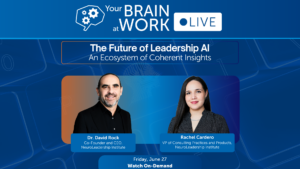“How should I’ve known? I am not a mind-reader!”
Chances are you’ve both said and heard some version of this many times. Every day, we interact with others and try to understand how they feel, what they want, and what they need while trying to solve a problem, move a project along, or resolve an argument.
We do that while juggling several tasks, facing tight deadlines, and balancing work and life. Add to that the compounding stress of an unfolding crisis, and we have a recipe for heightened anxiety, frequent misunderstandings, and conflict.
Why our communication isn’t perfect
In our interactions with others, we tend to bounce between what we know, what we think others know, and what we think they think they know … only to find out that we were not on the same page at all. We’re quick to assume, and often overestimate the degree to which, others understand our intentions and actions. In a sense, we operate under the illusion of transparency.
We are also quick to assume that everyone else is operating with the same level of understanding and information as us. In a famous study, participants were assigned to one of two groups: “Tappers” —who tapped out with their fingers the melody of a well-known song (e.g. Happy Birthday) without humming or singing the tune—and “Listeners”—who listened and were asked to guess the song. While the tappers assumed the listeners would guess correctly at least 50% of the time, it turned out that they only guessed 3 out of 120 songs correctly. A 2.5% success rate.
The discrepancy boils down to this: when something is clear in our heads, whether it’s a song or a decision, we have a hard time considering that it might not be clear to others.
To communicate with others more effectively, we need to get better at understanding what they’re feeling and thinking, and what they know. One way to do so is by perspective-taking and seeking.
What is perspective-taking?
Perspective-taking, also known as “theory of mind” or “mentalizing,” is the cognitive process of mentally stepping into someone else’s shoes to understand how their perspective explains their behavior. When we understand each other better, we’re better equipped to form the relationships that help us get work done.
Why is effective perspective-taking so hard?
There are a few reasons it can be hard to effectively perspective-take: 1) We tend to feel we already have all the information we need, 2) it’s cognitively taxing to imagine another person’s point of view, and 3) often we simply forget to do it.
As a result, we communicate less effectively than we’d like. Partially, because we tend to rely on hard-wired shortcuts called unconscious cognitive biases. We all take these shortcuts without intention, or much awareness, to make our thinking faster, our decision-making more confident, and our lives easier. Unfortunately, that means we don’t always get the full picture (or perspective).
So, we have to be aware of the way these shortcuts, or blind spots, affect the way we interact with others. Three groups of biases tend to be the biggest culprits: Similarity, Expedience and Experience.
- Similarity bias affects the way we listen to others, understand their point of view, empathize, or are motivated to help them.
- Expedience bias saves our mental energy by directing our focus to the most readily available, recallable information which makes us jump to quick conclusions.
- Experience bias leads us to assume we have an objective representation of reality, resulting in us often failing to recognize that our perception is, in fact, subjective and limited.
Can we get better at perspective-taking?
Fortunately, yes. We can improve our perspective-taking by deliberately pausing to consider the other person’s point of view, and actively seeking their perspective. By doing this, we’re more likely to mitigate the impact biases have on our perception and decision-making.
- Slow down. To mitigate expediency bias, take time to ensure you’re considering the whole picture. A deadline may be looming, but it’s worth checking whether you’ve jumped to conclusions.
- Don’t assume you know the answer. Ask frequently and regularly to ensure you are indeed on the same page. Confirming your understanding helps you mitigate experience biases.
- Ask explicitly. The best way to begin to understand someone better is to simply ask them for their perspective, especially those that you aren’t comfortable or familiar with. Asking helps you mitigate similarity biases.






